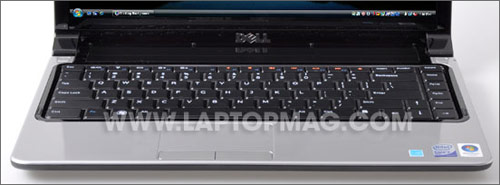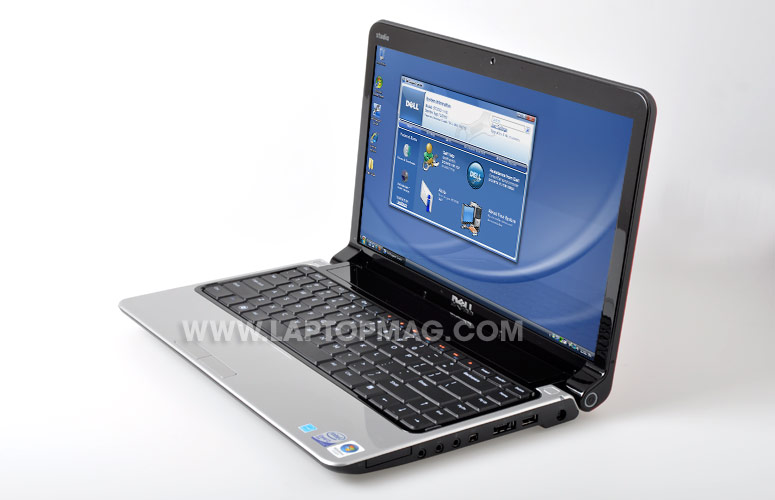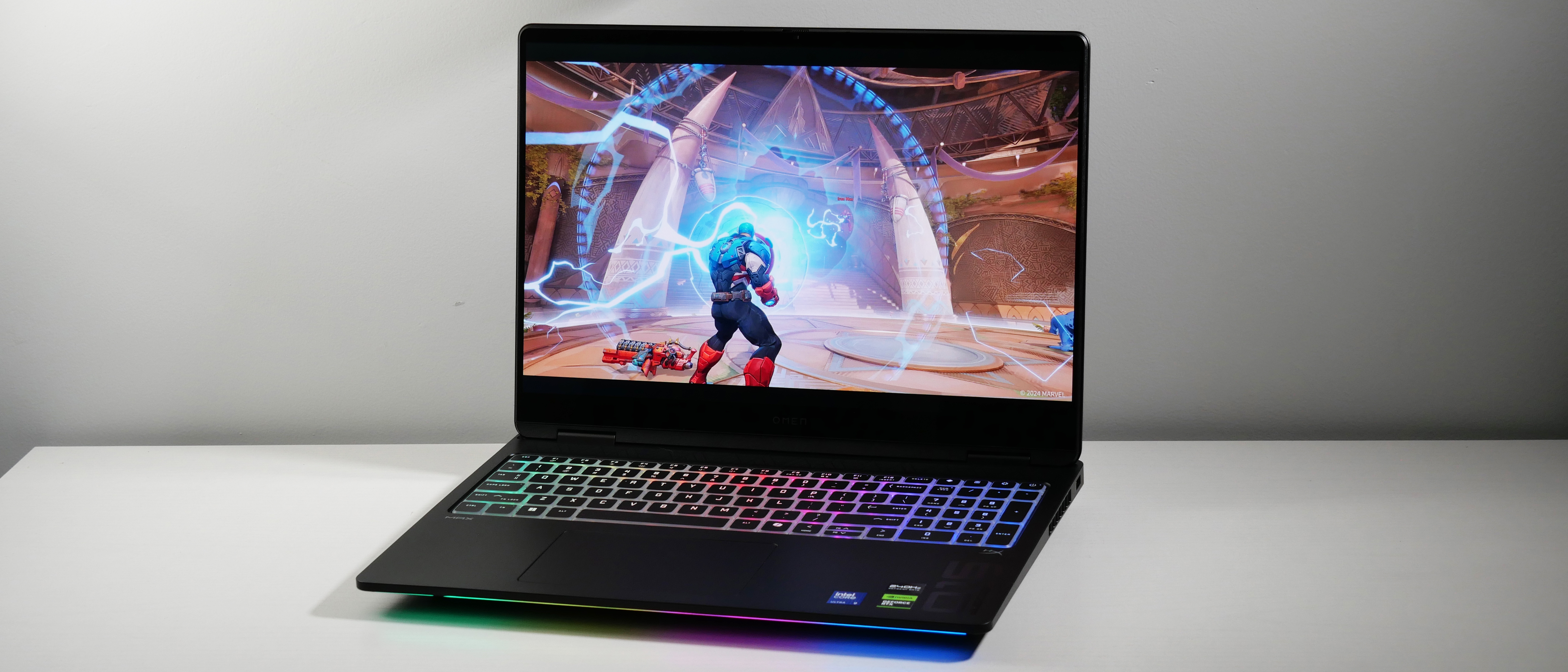Laptop Mag Verdict
This slim 14-inch notebook offers strong performance and long battery life, but you'll sacrifice an optical drive.
Pros
- +
Attractive, lightweight design
- +
Strong performance and graphics for price
- +
Long battery life
- +
Loud speakers
Cons
- -
Mushy touchpad buttons
- -
Using memory cards requires adapter
- -
Lack of optical drive will turn off some
Why you can trust Laptop Mag
Are DVD drives obsolete? That's the case Dell seems to be making with its Studio 14z, a 14-inch notebook that lacks an optical drive. Catering to students and other consumers who are more likely to download software and entertainment than use a disc, this thin and light system ($749 at Best Buy, starting at $649 on Dell.com) is ideal for streaming content and playing digital files. Add in above average graphics performance, courtesy of Nvidia, powerful speakers, and over five hours of battery life, and you have a compelling value. Best Buy even sweetens the deal by throwing in 15 months of free antivirus protection and a copy of Office 2007 Home and Student Edition.
Design
Although you can purchase the Studio 14z on Dell's site, the 1440-022B configuration we reviewed is a Best Buy exclusive--one of four notebooks to make the big box retailer's Next Class line, all of which boast long battery life, light weight, and sub-$800 price tags.
Like other laptops in this price range, the 14z has the plastic build of a budget notebook but subtle design flourishes that lend it a higher-end feel. The lid feels soft to the touch, and is largely fingerprint-resistant. As with other consumer Dell notebooks, black comes standard, but colors cost $40 extra (our unit was Ruby Red; other colors include Midnight Blue, Spring Green, Plum Purple, and Promise Pink).
Inside, the chassis mixes a matte silver palm rest with a glossy black strip above the keyboard, which is also black. You won't find any dedicated multimedia controls on this machine, although the playback and volume controls on the function keys can be used without having to press the Fn button. The power button, which glows white and is built into the hinge--a la Sony VAIO--is a nice touch.
The most distinctive element of the 14z's design, however, is that, despite its fairly large screen size, it has no optical drive. For some shoppers, this will be an instant turnoff. But other users, such as students, who are accustomed to downloading software, consuming digital media, and streaming clips on sites such as Hulu and YouTube, won't miss having an optical drive.
In absolute terms, a 14-inch notebook that weighs 4.4 pounds is fairly light. Certainly, the 14z is easy to carry. And yet, the 13.2 x 9.0 x 0.8-inch 14z felt surprisingly heavy when we first picked it up. TheLenovo IdeaPad Y450, a 14-inch notebook with an optical drive, weighs just a bit more at 4.6 pounds.
Keyboard and Trackpad
Thanks to the ample keys, we were able to type quickly and accurately right away: when we took theTen Thumbs Typing test, we scored 77 words per minute the first time (we usually score somewhere in the eighties), but that rose to 86 words per minute after some additional hands-on time. Part of the reason typing took some getting used to is that the keys don't provide the best tactile feedback; we felt that we had to press harder than we normally would.

Click to enlarge
The 3.3 x 1.8-inch touchpad is a decent size, as are the large mouse buttons, but they were somewhat mushy. When we tried to select on-screen objects, our clicks didn't always register the first time.
Display and Sound
The 14-inch (1366 x 768) was sharp enough for us to watch a Saturday Night Live clip on Hulu. Although bright head on, the colors and brightness quickly faded as we shifted the screen to watch from the sides and with the lid pushed down.If you buy the 14z through Dell.com, you can configure it with a higher resolution 1600 x 900 screen, which gives you a lot more screen real estate.
For a budget notebook, the 4-watt stereo speakers were impressively loud, albeit somewhat tinny at max volume. Our speakers were powered by standard Intel Hi-Defintion 2.0 audio, but if you buy the 14z online (this unit happens to be a pre-configured Best Buy exclusive) you can get Soundblaster X-Fi Hi-Def Audio technology for $25, which promises even better sound.
Ports
The 14z's port selection makes it high-def monitor-ready: it's got HDMI and DisplayPort output (but no VGA, an older standard). It also has three USB ports, one of which doubles as an eSATA port (which can recharge gadgets even when the system is turned off). On the multimedia front, it has two headphone ports, a mic port, and an ExpressCard/34 slot rounds out the selection.

Click to enlarge

Click to enlarge
Unfortunately, although the 14z can accommodate a memory card reader, it's not built in. You have to purchase a separate adapter from Dell's site for $20 that fits into the ExpressCard slot. If you do that, you can't use that slot for a mobile broadband card, for example, while transferring photos via an SD card.
On the other hand, you could always purchase a third-party USBmemory card reader forless than $10from anonline retailer like Newegg.Or you could buy the ExpressCard reader from dell and use a USB modem or spring for integrated mobile broadband ($125 option).
Webcam on the Studio 14z
The webcam's 1.3-MP still photos showed good color brightness, as did the VGA video, which also looked pretty fluid. We especially enjoyed the audio: save for a slight echo, our voice sounded loud and accurate. The Intuitive Dell Webcam Central console has lots of drop-down menus and a sleek black skin. The stills and videos you've just shot appear at the bottom of the console as thumbnails, making them easy to review.
The webcam also couples with third-party facial recognition software, allowing users to log into the computer simply by looking into the camera (and not typing a password). Setting up this feature is easy: just open FastAccess software, and choose your user account. You'll briefly be taken to the login screen, where the camera will read your face. And presto! You're registered. When we set it up and logged in for the first time, the technology worked like a charm.
Performance
The 2.1-GHz Intel Core 2 Duo T6500 CPU, 3GB of DDR3 RAM, and Nvidia 9400M graphics card combined to produce a PCMark Vantage score of 3,544. That's a full 500 points above the category average. The $599 Gateway NV5087u, which has the same processor and 4GB of RAM, but Intel's integrated graphics, scored just 3,262.
In our hands-on testing, the 14z felt zippy. At one point, we had eight windows open on the desktop, including Microsoft Word, and still were able to switch between programs with ease. Ditto with Web surfing: we had a seamless experience in Internet Explorer, with several tabs open, including Hulu and Slacker.
While the 14z's boot time of 56 seconds is a few seconds faster than average for a Vista machine, the 320GB, 5,400-rpm hard drive transferred a 4.97GB mixed media folder at a rate of 18.5 MBps, which falls slightly short of the category average (19.3 MBps).
Graphics
The 14z has but one graphics option: the excellent integrated Nvidia GeForce 9400M card. Its score of 2,101 on 3DMark06 is 600 points above the category average.
As for real-world gaming, it delivered playable frame rates on Far Cry 2, so long as we stayed at 1024 x 768 resolution. On that setting, it averaged 26 frames per second. But when we cranked the resolution to its max--1366 x 768--it dropped to a sluggish 11 frames per second; both of these scores are in line with the category average.
The notebook completedour standard video transcoding test, in which we use HandBrake to transcode a short MP4 clip to AVI,in seven minutes and thirty seconds, which is respectable, but still about forty-five seconds slower than the category average. Because the Dell Studio 14z features an Nvidia graphics chip, we also tried transcoding the video using vReveal, a program that takes advantage of Nvidia's CUDA technology to improve transcode speeds. The Studio 14z completed the latter test in a speedy 3:20, a 55-percent improvement.
Meanwhile, the 14z's Dell Wireless-N radio managed throughput of 19.9 Mbps and 18.1 Mbps at 15 and 50 feet, respectively, which rises above the category averages for both tests(19.5 Mbps and 15.2 Mbps).
Battery Life
The 14z's 8-cell battery lasted 5 hours and 25 minutes on the LAPTOP battery test, which is 1:10 longer than the typical thin-and-light. Moreover, it beat out similarly sized systems with integrated graphics: the HP Pavilion dv4t (a variation of which is also being sold as part of Best Buy's Next Class line) lasted just 3:08 in our tests.
Greenness
The 14z isn't the most energy efficient notebook. It has a low EPEAT rating of 6 (out of 28), whereas most other notebooks we've tested, across various screen sizes, have a rating between 17 and 22. It took close to three hours to fully recharge, and uses an average of 51.4 watts while charging, whereas theLenovo ThinkPad T400, another 14-incher, uses 42.6 watts. The LAPTOP battery efficiency rating (the total amount of watts it takes to charge divided by the battery life) of 26.4 is middle-of-the-road: the T400 has a rating of 18 (lower numbers are better) while Dell's Studio XPS 13 has a rating of 56.8.
Heat
At rest, the keyboard measured 90 degrees Fahrenheit between the G and H keys (anything under 95 degrees is fine while under 90 is excellent).While streaming over Hulu, however, the keyboard temperature rose to 92 degrees, and the left side of the notebook (the location of the fan) became very warm, measuring as high as 105 degrees. However, the fan wasn't very loud.
Configuration Options

Click to enlargeThe $749 configuration of the 14z we reviewed is a Best Buy exclusive, which also includes the full version of Microsoft Office Home and Student 2007 and a 15-month trial of Norton Internet Security.
Choosing CPU, RAM, andStorage
On Dell's site, configurable versions of the 14z starts at $649. Processors run the gamut from a 2.0-GHz Pentium Dual Core CPU to a 2.66-GHz Intel Core 2 Duo CPU ($350). The system comes standard with 3GB of DDR3 RAM; the max, 5GB (an unusual amount) costs $275. Hard drive options range from a 250GB 5,400 rpm drive (standard) to a 500GB 7,200 rpm drive ($175). The only graphics option is the integrated Nvidia 9400M chipset, which we're happy is standard.
Getting a Higher Resolution Screen
Although a 14-inch LED display comes standard, users can choose between standard 720p resolution (1366 x 768) and 1600 x 900 (Dell calls it 900p on the site) resolution for an additional $50. We recommend the higher resolution because it should greatly improve the surfing experience by allowing you to see more Web content above the fold in your browser.
Wi-Fi and Battery Options
Both wireless radios--a Wireless-G and Wireless-N option--are made by Dell. The wireless-N option costs $25 extra. Bluetooth 2.1 is a $20 upgrade. An AT&T mobile broadband module costs $125.
A six-cell battery is standard; an extended eight-cell battery costs $40. Other options include a backlit keyboard ($25). External optical drive options include a DVD burner ($120) and a DVD burner with Blu-ray playback ($280).
Software and Warranty
In addition to the webcam and FastAccess software, Best Buy's Class Note version of the 14z comes bundled with Microsoft Office Home and Student 2007, a 15-month trial of Norton Internet Security, and Windows Live Essentials. Not bad for a consumer machine.
The 14z has a one-year warranty, including 24/7, toll-free phone support. To see how Dell fared in our annual tech support showdown, click here.
Verdict
If you can live without an optical drive (and we suspect many of you can) and a dedicated memory card reader, the Dell Studio 14z has lots to offer: an attractive design, powerful speakers, good endurance, and strong performance, including Nvidia 9400M graphics. If you do need an optical drive, you might prefer theHP dv4tor theLenovo IdeaPad Y450, both of which start at $579. Otherwise, the Studio 14z is a unique and compelling notebook.
[flq:fd5c4cd8a68240198c38cb012491eb36]
Dell Studio 14z Specs
| Brand | Dell |
| CPU | 2.1GHz Intel Core 2 Duo T6500 |
| Card Slots | 8-1 card reader, ExpressCard/34 |
| Company Website | http://www.dell.com |
| Display Size | 14.1 |
| Graphics Card | Nvidia GeForce 9400M G |
| Hard Drive Size | 320GB |
| Hard Drive Speed | 5,400rpm |
| Hard Drive Type | SATA Hard Drive |
| Native Resolution | 1366x768 |
| Operating System | MS Windows Vista Home Premium (64-bit with SP1) |
| Ports (excluding USB) | Ethernet, Dual Headphone, DisplayPort, USB/eSATA, Microphone, HDMI |
| RAM | 3GB |
| RAM Upgradable to | 5GB |
| Size | 13.2 x 9.0 x 0.8 inches |
| USB Ports | 2 |
| Video Memory | 256MB |
| Warranty/Support | One-year limited/24/7 toll-free phone |
| Weight | 4.4 pounds |
| Wi-Fi | 802.11b/g/n |
